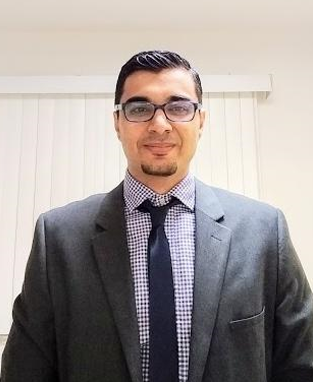
Mohammed Kadalah’s journey: from Homs, Syria, to Santa Clara, CA
I came to the USA as part of the Dept. of State exchange program in collaboration with Fulbright. After Fulbright conducted a rigorous search in Syria, I was one of three candidates chosen to teach Arabic at a U.S. university in 2011. I arrived to the U.S. in late August 2011 and spent my first year teaching Arabic at Hobart and William Smith Colleges (HWS) in Geneva, NY. Then, I was unable to return to Syria because of the violence of the state against the Syrian people. If went back, I would have been arrested at the airport and transferred to a military base to serve my mandatory military service. I did not want to shoot innocent people, neither did I want to be killed if I did not follow orders.
The head of the Middle Eastern studies program at HWS, Stacey Philbrick Yadav, helped me obtain an adjunct position at HWS. In the meantime, I applied for political asylum and was accepted for a Master’s program in Literary Translation at the University of Rochester. Upon my completion of the master’s and my term at HWS, I moved to Connecticut to begin my Ph.D. studies at the University of Connecticut.
While there, I had the chance of meeting Chris George, the director of a refugee resettlement organization, IRIS, in New Haven. I volunteered there with refugees, mainly in offering interpretation services. Chris told me about a journalist, Jake Halpern, who was looking for an interpreter for a graphic novel project. The project was designed to meet with Syrian refugee families and listen to their stories during the Syrian Uprising: how they lived it, their personal experiences, how they ended up in America and what their lives are like after arriving. One of the main goals was to humanize the refugees by telling their testimonies about their lives in the two worlds they lived in a set of graphic stories that would be titled, Welcome to the New World. I worked with Jake Halpern as a cultural aid because the stories of the families would make a lot more sense if I explained the political, social, economic and religious culture of the situation in Syria before and during the uprising. Twenty episodes from Welcome to the New World were featured in the New York Times, and the series won the Pulitzer Prize for editorial cartooning in 2018. I continue to work with Jake and the Syrian families via videoconference and I look forward to the upcoming expansion of the episodes into a full-length graphic novel.
I have been teaching at SCU for two years. I value and appreciate the opportunity to teach in such a diverse region and at a Jesuit institution, with its rich history of supporting equality and social justice. I am working to improve the Arabic program by organizing cultural events, raising awareness about Arab culture and heritage, and by developing a new course on Arab-American literature. I aim to increase enrollment in the Arabic programs and promote cultural integration and understanding among out students.